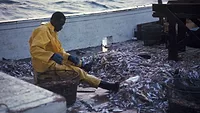WHO and FAO Offices in Asia, the Americas, and Africa Highlight Their Work on Safe Food

Recently, regional World Health Organization (WHO) and Food and Agriculture Organization of the United States (FAO) offices in Asia, the Americas, and Africa showcased their work on safe food to mark World Food Safety Day.
The Pan American Health Organization (PAHO) is helping countries in the Americas strengthen food control systems. Through actions coordinated by the Pan American Center for Foot-and-Mouth Disease and Veterinary Public Health, PAHO is working with nations in Latin America and the Caribbean on standards and regulations, education and communication, surveillance, inspection, and laboratories.
Although the virus behind the COVID-19 pandemic is not transmitted by food, the pandemic has highlighted related issues such as hygiene, antimicrobial resistance, zoonotic diseases, climate change, and food fraud, according to officials. It has also identified vulnerabilities in production and control systems of supply chains at global, regional, and local levels, said PAHO.
The World Health Organization estimates that every year 77 million people are affected by and more than 9,000 die of a foodborne disease in the Americas alone. Foodborne infections overload health systems and reduce economic development because of a lack of confidence in safe tourism, food production, and the marketing system. They account for $7.4 billion per year in productivity losses for society.
The Caribbean Public Health Agency (CARPHA) has implemented a near real-time surveillance method called the Tourism and Health Information System. This system provides an early warning and mitigation of foodborne outbreaks at Caribbean hotels and other accommodations.
Foodborne diseases are a priority for the Caribbean’s travel and tourism sector. This sector contributes 40 percent to 60 percent of the Gross Domestic Product for some countries in the region. CARPHA has trained more than 600 facilities in use of the tool.
Every year in the Caribbean, 1 in 49 people fall ill from a foodborne illness. At mass gatherings, such as family events, 1 in 11 people become sick. Countries spend an estimated $21 million annually to manage and address foodborne infections. Norovirus, Campylobacter, Giardia, and Salmonella contribute the greatest burden of illness and hospitalization. Diseases from seafood like vibriosis and ciguatera are health concerns faced by some Caribbean states.
Looking for quick answers on food safety topics?
Try Ask FSM, our new smart AI search tool.
Ask FSM →
CARPHA has also trained and built capacity in member states for sampling, testing, disease investigation, and risk communication, and is currently scaling up surveillance and response measures for food illnesses.
The Asia Pacific regional offices of five organizations—FAO, World Organisation for Animal Health, United Nations (UN) Environment Programme, UN World Food Program, and WHO—used World Food Safety Day to promote the One Health approach to food safety. A regional webinar was attended by more than 400 participants from 69 countries. Experts gave perspectives on how hazards and contaminants across supply chains such as heavy metals and pesticides find their way into food and have affected human, plant, animal, and environmental health.
The experts emphasized the main causes of foodborne illnesses in the region were pathogens and that heightened hygienic and sanitary measures due to COVID-19 are expected to have positive related effects for food safety in the long term. Consumer awareness and education and training a new generation of food safety professionals were highlighted as priorities.
In Nigeria, the story of a 48-year-old fisherman in Andoni, Rivers State who fell ill after eating contaminated moi-moi, a local delicacy made from beans, was discussed.
The Minister of State for Health, Adeleke Mamora, said production and consumption of safe food has a long-term benefit to society in general. He said that one of the major pillars of universal health coverage is disease prevention and one of the major ways of disease prevention is food safety.
WHO trained 345 women from Edo and Ondo states on food hygiene and domestic sanitation and is helping federal and state agencies integrate food safety into policies and programs.
Source: Food Safety News








